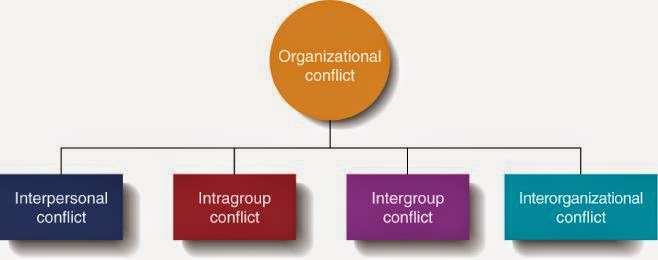Menu
- HOME
- INTRODUCTION IMPORTANCE
- COMMUNICATION
- MOTIVATION
- LEADERSHIP
- OTHERS
- ASSINGMENT
-
ABOUT US
Monday, February 16, 2015
Organizational Behavior: What is Negotiation ?
Organizational Behavior: What is Negotiation ?: Any strategic discussion that resolves an issue in a fashion that both parties find appropriate. In a negotiation, each party tries to per...Organizational Behavior: Conflict Project life Cycle
Organizational Behavior: Conflict Project life Cycle: Four stage model – project formation, buildup, main program and phase out Conceptualization, planning, execution and termination Fir...
Saturday, February 7, 2015
Conflict Project life Cycle
Four stage
model – project formation, buildup, main program and phase out
Conceptualization,
planning, execution and termination
- First stage (initial planning) – adopt objectives, set scope
- Second stage – detailed planning, budgeting, scheduling and aggregation of resources
- Third stage – accomplished actual work
- Final stage – works are completed and products turn over to client, disposition of project’s asset and personnel
Organizational Conflict
A fundamental definition of organizational turmoil is disagreement by
individuals or groups inside the organization, which can target factors ranging
from source allocation and divisions of responsibility towards the overall
direction of the business. A common example associated with organizational
conflict occurs whenever workers advocate for higher pay and also the business
owner or administration wants pay levels to stay the same.
What is Business Incubator ?
A business incubator is a shared office space facility that seeks to provide its incubatees with a strategic, value-adding intervention system of monitoring business assistance. The business incubator seeks to effectively link talent, technology, capital, and know hoe in order to leverage entrepreneurial talent and to accelerate the development of new companies..... Continue
Sunday, February 1, 2015
What is Grapevine?
Grapevine is actually one type of informal conversation. It is principally about news, rumor, informal which talks devote an business. Manager can't control grapevine. They are able to influence this.
"Grapevine comes from social conversation; it is really as fickle, dynamic as well as varied as individuals are. It may be the exercise of the freedom associated with speech and it is a organic, normal activity".
"Grapevine comes from social conversation; it is really as fickle, dynamic as well as varied as individuals are. It may be the exercise of the freedom associated with speech and it is a organic, normal activity".
What is Intellectual Property?
Intellectual
property –It includes patents, trademarks, copyrights, and trade secrets-
represents important assets to the entrepreneur and should be understood even before
engaging the businesses. They are legally recognized exclusive rights to
creations of the mind.
Example: Authors writing, invention etc
Example: Authors writing, invention etc
Developing the Management Team
Entrepreneur should develop the competent
management team to operate the business because it is significant to potential
investors. Investors will usually demand that the management team not attempt
to operate the business as a sideline or part-time venture while employed full
time elsewhere........Continue
The basic determinants of individual behaviour
Personality – the individual psychological structures and processes which shape a person's actions and reactions with the environment;
Perception – the process by which the individual interprets the stimuli received from his/her environment......Continue
Who is entrepreneur and who is not?
An entrepreneur is a person who-
- is able to recognize potential profitable opportunities;
- is able to conceptualize the venture strategies;
- is able to become the key force in successfully moving the idea from the laboratory to the market place.....Continue
Sunday, January 25, 2015
Maslow’s Hierarchy of Needs
Maslow's suggested that
people are in a continuous state of motivation, and that nature of that
motivation is variable and complex..... Continue
Friday, January 23, 2015
What is Organizational Behavior ?
Organization behavior is
concerned with the study of the behavior of people within an org setting.
Strictly speaking, only relatively small organization behave as a collective
entity. In large organization we will be more concerned with behavior at the
individual, group and organization levels and aim to explain and understand the
factors that influence our behavior at work........ Continue
Organizational Goal
If we go back to our original definition of an org, we can identify two implied features: *the members of the organisation are involved in activities in a co-oriented and on-going fashion; *they are seeking to achieve a particular purpose or purposes.
In fact, these are the wrong way round. The reason that the members of the organisation are engaged in a systematic effort is to achieve the defined purpose. The purpose comes first and provides the rationale for the activities..... Continue
Organizational Culture
The culture of an organisation refers to the deep-seated values underpinning the organisation. It is manifested through a number of features (as discussed below) and it is increasingly being recognized that the culture is fundamental to the success or failure of organisations in meeting their goals....... Continue
Types of Human Needs
When a machine
malfunctions we recognize that it needs oil or any other repair. Whatever is
done on the basis of knowledge and analysis. If the machine operator
malfunctions then also we recognize that he needs something and that something
may be his training/development or incentive in any form and that is the human
need we have to identify and meet..... Continue
What is Empowerment ?
It means
the employees, managers or teams at all levels in the org are given the power
to
make decisions without asking superiors for permission. Provided they have
the required
competencies...... Continue
Types of Leadership
- Autocratic: Single focus of power .Single dec making & auth to determine poli, procedures to reach goals, work tasks & relationships, control of reward and punishment.
- Participetive: Group focus of power. Shared with members of the group & manager is part of a team. Members can participate in dec making, determination of pol, implementation of systems & procedures...... Continue
Subscribe to:
Comments (Atom)








